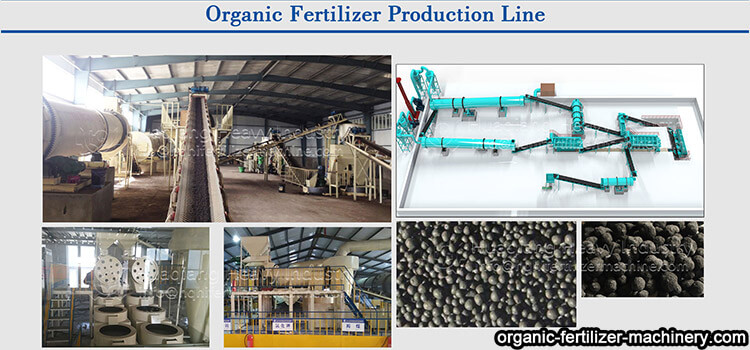In fact, cow dung is not only dung, but also can be turned into treasure. It is a good choice to ferment cow dung into cow dung fermented Manure. Using cow dung as raw material to produce Manure has low cost and stable quality. Fermented cow dung Manure is widely used in vegetables, fruits, seedlings, Cash crop, medicinal materials, tea, bonsai, green vegetation, etc..jpg)
Methods and steps of cow dung Organic fertilizer production line fermentation to make Manure
1. Pile the raw materials for making cow manure into strips on a flat surface. (The slot type tipping machine directly puts the materials into the slot), the stacking width is equal to the equipment’s stacking width, the height should be as high as possible, and the length should be as long as possible, such as 50 meters, 100 meters, etc. The ground should be flat, and both cement and land can be used (as long as it is flat and has a certain hardness). For every 10000 tons of production, a site area of 5-6 acres is required, and the slot type tipping machine will occupy a relatively small area.).
2. Sprinkle the composting base materials such as piled animal manure and other materials, household waste, sludge, etc. with biological fermentation agents (our unit provides technology and fermentation agents).
3. Use Organic fertilizer dumper or trough dumper to evenly mix and turn cow dung (water content should be 50% -70%), fermentation bacteria agent, etc., deodorize within 3-5 hours, heat up to 50 ° C within 16 hours, and then turn over again to increase oxygen when the temperature reaches 55 ° C. Later, when the temperature of the material reaches 55 ° C, start to turn and mix, so as to achieve the effect of uniform fermentation, oxygen increase, and temperature drop, and repeat the next process until complete decomposition.
4. If the moisture content of cow manure is too high, auxiliary materials containing organic matter that are relatively dry and can absorb water can be added, or the last dried fertilizer can be placed underneath to form a choppy shape by reflux method. Pig manure with a high moisture content can be placed in the middle to allow the moisture from the top to seep into the bottom before flipping.
5. Generally, the fertilizer process takes 7-10 days. Due to different climates, it may take 10-15 days for the materials to be completely decomposed, truly realizing no odor, no bacteria, insect eggs, weed seeds, high Humus content, high potassium content, etc.
6. If we want to turn powdered fertilizer into granular fertilizer, we need to add equipment such as disc granulators, crushers, grading screens, dryers, cooling machines, automatic packaging machines, and belt conveyors.

.jpg)

.jpg)

.jpg)

